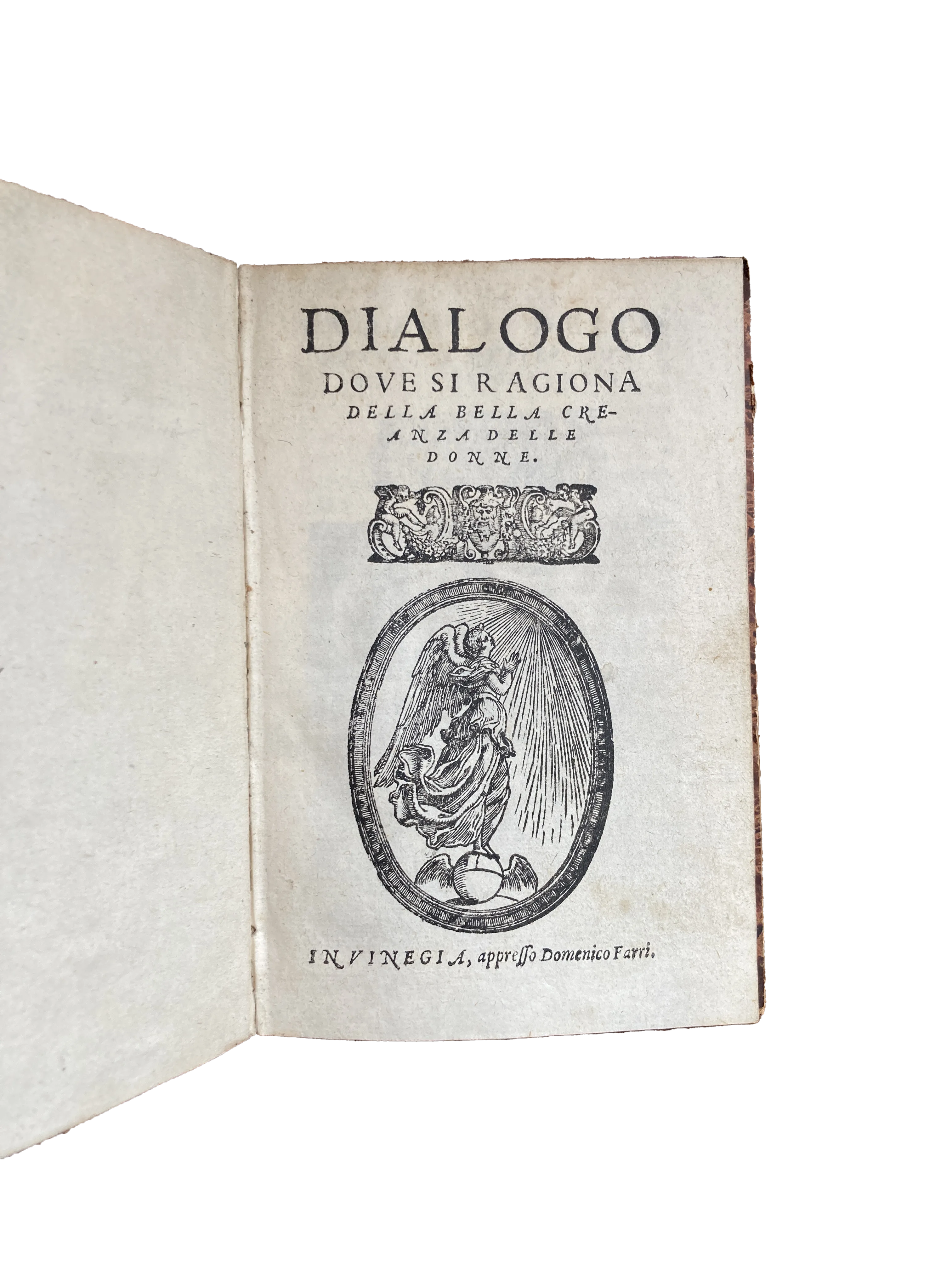PICCOLOMINI, Alessandro.
Dialogo dove si ragiona della bella creanza delle donne.
Venice, Domenico Farri, [n.d., but after 1555].£2,450.00
8vo. ff. 46. Italic letter, little Roman. Woodcut printer’s device and ornaments to title, decorated initials. Slight browning to second half, principally in last gathering, occasional slight marginal foxing. A good copy in early C19 ¼ sheep over marbled paper boards, marbled eps, spine gilt-lettered, a little scuffed.
A good copy of this popular and interesting work on women, their youth, bearing, social life and adultery, which was considered quite scandalous in its day. First published in 1539, and also known as ‘La Raffaella’, it is here in its fifth ed., all early eds being scarce. Alessandro Piccolomini (1508-78) was a member of the Accademia degli Intronati, and his ‘Dialogo’ was intended as a playful literary entertainment creating a topsy-turvy world in which the widsom of old age is not spiritual, but very material. In the work, Raffaella, an older woman, gives advice to a younger woman, Margarita, on ways to enjoy herself while she still has time. The incipt sets the light tone, with Raffaella answering to Margarita asking after her health in typical Italian fashion: ‘Full of sins and fatigue, like all old women’ and ‘Old, poor and with my head nearing the grave by the hour’. Margarita’s beauty reminds Raffaella of her own youth and the amusements she shunned at parties and feasts, till it was too late (i.e., age thirty). She explains that betraying one’s husband is not sinful as marriages are combined with men who will never be their wife’s true love. As clarified at the end, ‘Raffaella’s aim is to give advice as to how a woman can accomplish this adultery with cleverness and prudence so as to preserve secrecy’ (though the chosen man should not be married), as she becomes, at some point, the ‘anti-model of a confessor’, giving advice on sinning (McClure, pp.36-7). Tthese observations concealed a wealth of small details on women’s social life in the Renaissance: e.g., it is very bad when a woman keeps wearing the same dress too long, and even worse when others can see she turned that same dress into another by dyeing or turning it inside out; what clothes best suit specific complexions; recipes for roasted pigeons and aromatic waters; countenance when walking in the street (e.g., with one’s mouth open or pouting); how to show off one’s chest without seeming too forward, etc. A most interesting and entertaining work.
USTC 848313; EDIT16 37664 (after 1555, when Farri started his printing activity); Gay VI, 56; Erdmann 85 (1540 ed.); Gamba 1571 (‘molto raro’). Not in Hull. G. McClure, Parlour Games and the Public Life of Women in Renaissance Italy (2013).In stock





